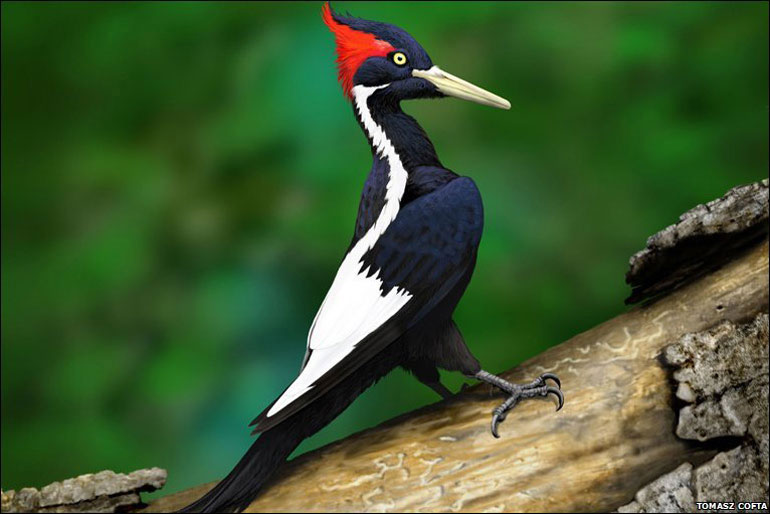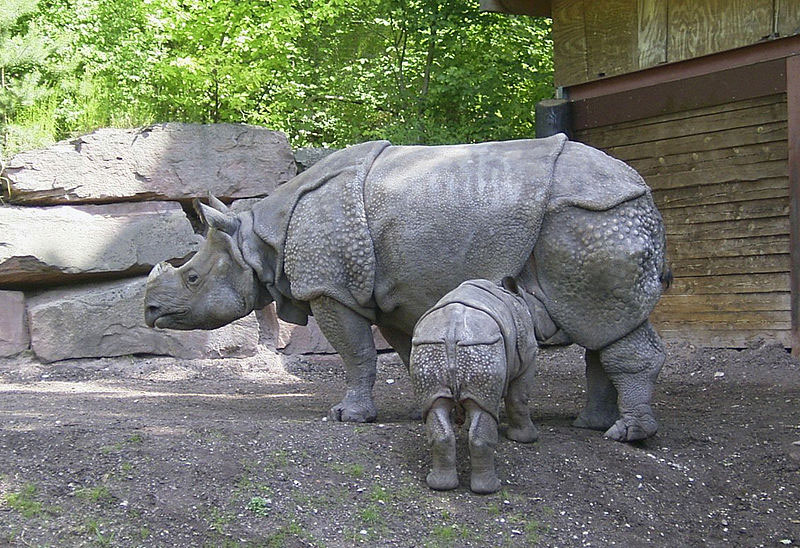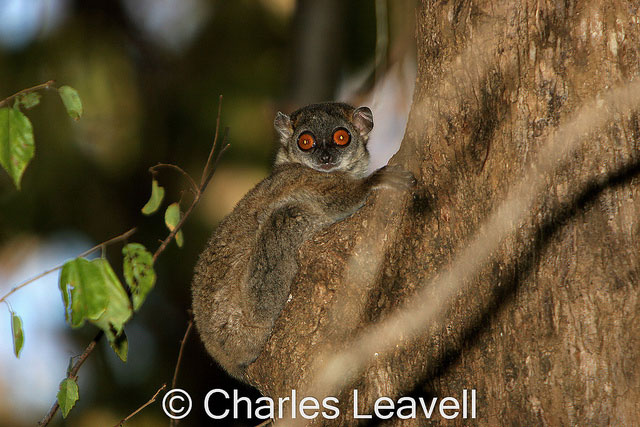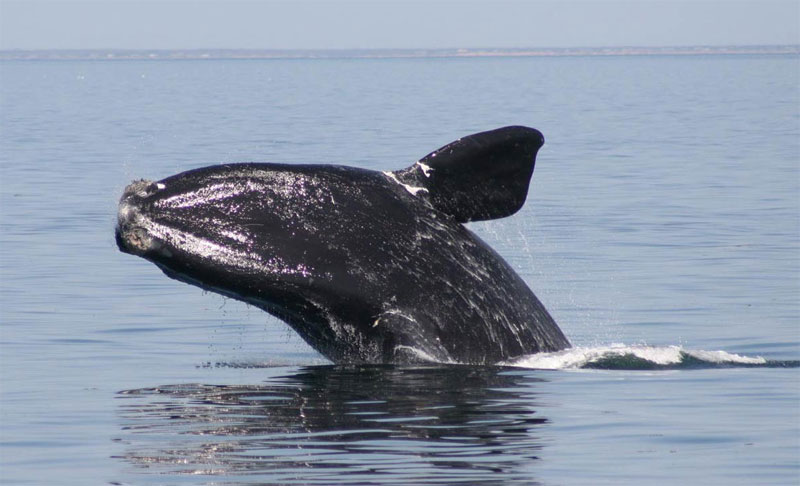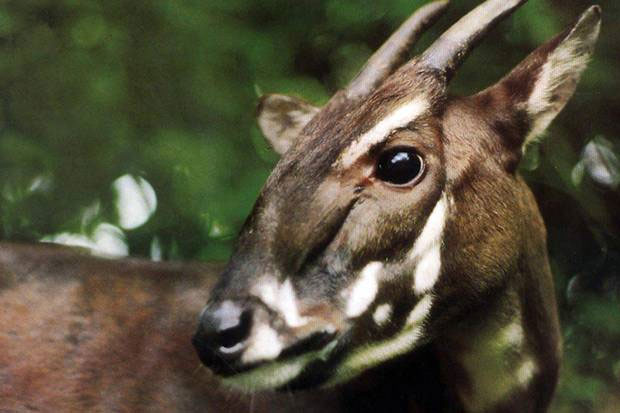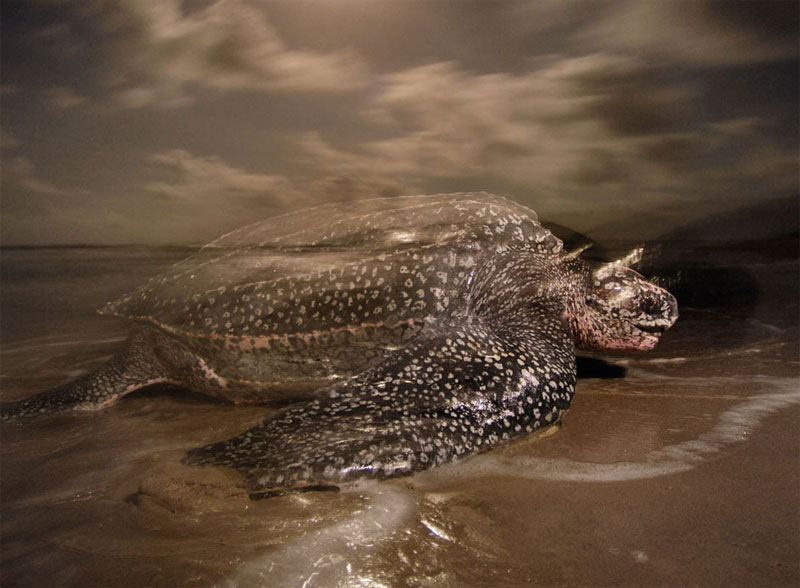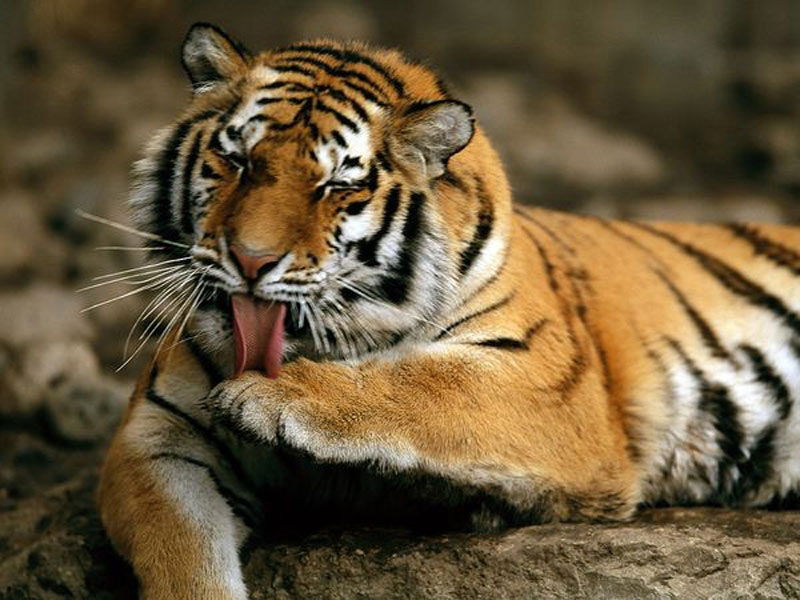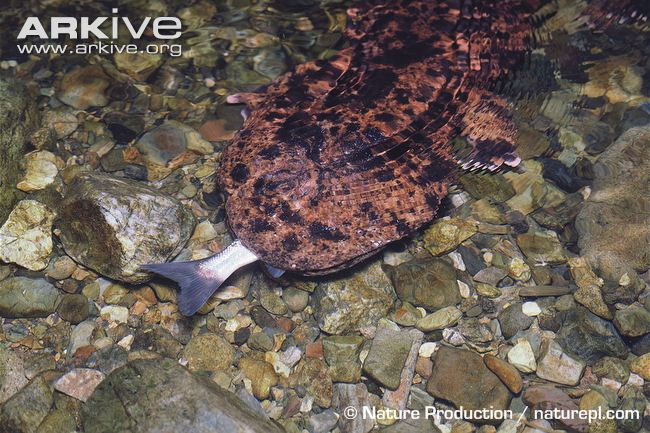Siberian tiger, Javan rhinoceros or saola are rare animals classified as the most endangered in the world due to the effects of climate change and rampant poaching.
1. Ivory-billed woodpecker
Ivory-billed woodpeckers have or are living in the southeastern United States and Cuba. This bird was once thought to be extinct. However, several reports in 2004 and 2006 showed the species reappearing in Arkansas and Florida, USA. However, the evidence for the existence of this woodpecker is rather vague. Experts say that if they still exist, the number of birds is also very small and they are vulnerable. The disappearance of this species is thought to be due to human encroachment that limits habitat and hunting for feathers.
2. Amur newspaper
The Amur leopard (Panthera pardus orientalis) is a very rare leopard subspecies that inhabits the deserted and snow-covered forests of the Primorye region of eastern Russia. This cheetah used to live in Korea and northern China, however, they are all extinct in these areas. Threats to the Amur leopard include habitat loss due to logging, human poaching, and global climate change.
3. Javan Rhino
The Javan rhinoceros is the most endangered of the five rhino species in the world. The number of individuals extant today ranges from 40 to 60, living in the western part of the island of Java, Indonesia, in the Ujung Kulon National Park. The last Javan rhino in Vietnam's Cat Tien National Park was killed by poachers in 2011. This rhino used to live in Southeast Asian countries, but poaching for its horns makes it almost extinct.
- Top 12 animals with the best hearing in the world
- Top 12 Animals with the strangest sleeping habits
- Top 12 most mysterious black animals
- Top 12 Animals with the weirdest brains on the planet
- Top 10 animals with the most stomachs on the planet
4. Northern Sportive Lemur
This species of lemur is currently less than 20 individuals living in the wild. They live mainly on the island of Madagascar, off the southeast coast of Africa. Northern Sportive lemur population decline is due to hunting and lack of habitat in the forests.
5. Northern Right Whale
Northern Right whales currently only 350 live in the waters of Canada and the United States. This fish not only contains a lot of fish oil, but also floats to the surface after death, so it is easy to handle. Although the Northern Right whale is protected today, its numbers are constantly decreasing as it is caught for commercial purposes.
6. Why?
Sao la (Pseudoryx xentinhensis), one of the rarest mammals in the world, lives in remote mountainous areas in the Truong Son Mountains in Vietnam and Laos. This species is very endangered in the wild, classified as endangered in the Red Book of the World Conservation Union (IUCN) and in the Red Book of Vietnam. Saola was first seen in 1992.
7. Leatherback Sea Turtle
The leatherback sea turtle (Demochelys coriacea) is the largest tortoise in the world and has a worldwide range. They are classified as rare and endangered species. According to IUCN, the number of adult turtles in the world in 1982 was 115,000. 14 years later, the number dropped to only 20,000-30,000. The theft of turtle eggs, illegal poaching and habitat loss are the reasons why this species of turtle is gradually disappearing.
8. Siberian Tiger
Siberian tiger or Amur tiger is the largest animal in the cat family in the world with a weight of up to 300 kg. Unlike other bitterns, the Siberian tiger lives in the frozen birch forests of the Russian Far East and in China and Korea. They are classified as one of the most endangered animals in the world. There are only about 500 tigers left in the world today.
9. Chinese giant salamander
The Chinese giant salamander (Andrias davidianas) is the largest amphibian in the world, with a body length of up to 1.8 m. This species lives mainly in the southern, southwestern and central regions of China. They usually live in forest streams and can lay up to 500 eggs at a time. This species has almost completely disappeared in the wild because they are hunted for food.
10. Little Dodo (Little Dodo)
The Dodo bird, also known as the Manumea bird, lives in Samoa in the western Pacific Ocean. Although this bird has a body length of only about 30 cm, it is in fact a relative of the big Dodo. The great Dodo became extinct 400 years ago. Endangered is also a threat to the small Dodo.
11. Borneo orangutan
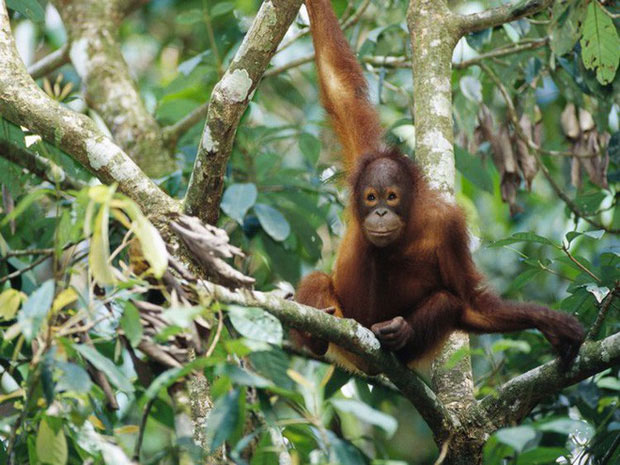
Over the past 60 years, the number of orangutans with this extremely special physique, has decreased by 50%. Living on the island of Borneo, the largest island in Asia, the Borneo orangutan has a large face and a much shorter beard than its other cousins.
There are all 3 branches of the Borneo gibbon, including the Northwest, Northeast and Central regions. The largest subspecies lives in the middle of the island, numbering 35,000. The most threatened is the branch living in the Northeast region, due to the habitat destruction by logging and hunting, so now there are only about 1,500 left.
Scientists predict that, by 2025, the number of Borneo orangutans will decrease by another 22%, to only 47,000.
12. Mountain gorillas (mountain gorillas)
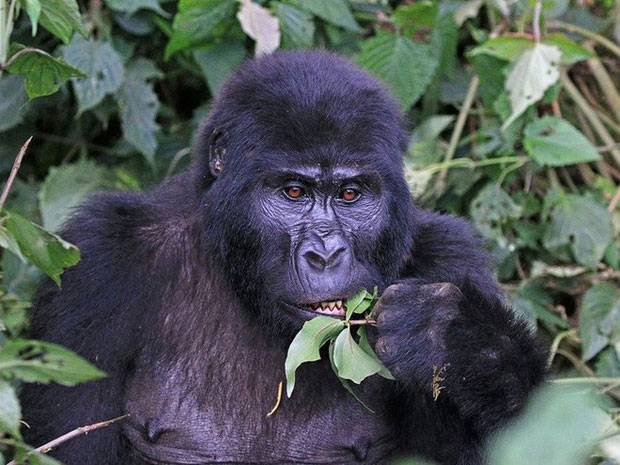
Currently, the population of this type of gorillas is less than 900. Animal activists are trying to maintain this number every day. According to the Africa Wildlife Foundation, the biggest threats to mountain gorillas are war, human encroachment and forest degradation.
Currently, mountain gorillas live in 3 countries and 4 national parks, such as Bwindi National Park in Uganda and Virunga National Park in Congo.
13. Yangtze fineless porpoise
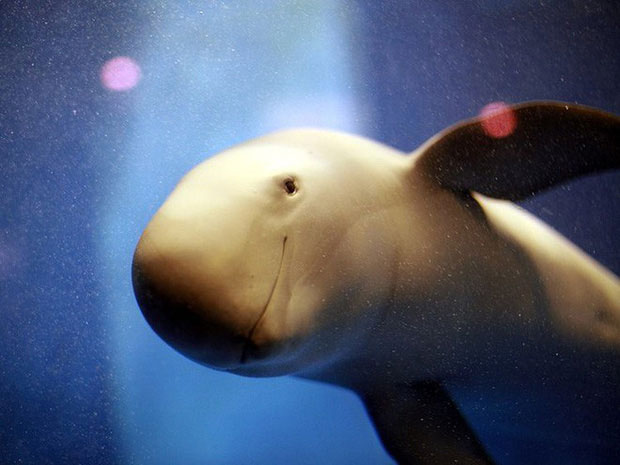
With a distinctive "smooth" appearance and outstanding intelligence, this dolphin from the Yangtze River area is closely related to the Baji dolphin. Currently, there are only about 1,800 to 2,000 individuals left.
14. Philippine Crocodile
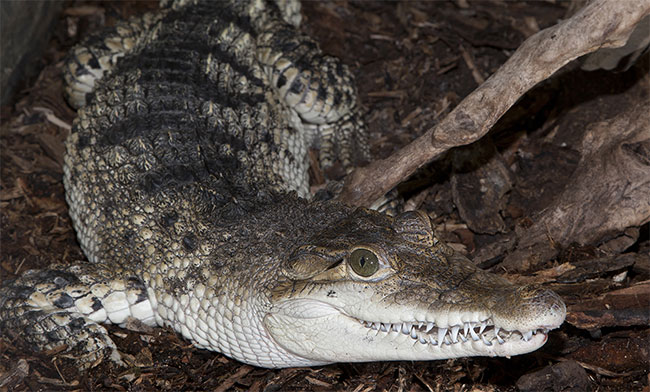
According to the International Union for Conservation of Nature, there are currently less than 200 Philippine crocodiles left in the wild. They often lose their lives due to entanglement in fishing equipment or human destruction of the environment.
15. Bengal vulture
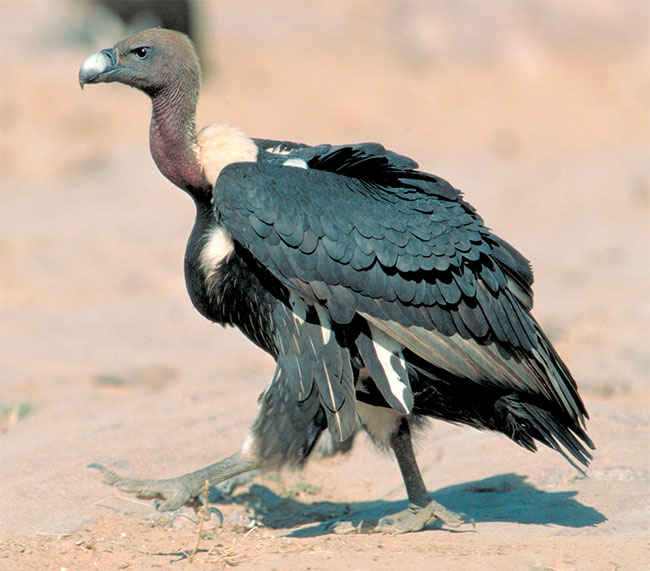
The number of these vultures has been in catastrophic decline over the years. Mother Nature Network data shows that 99.9% of the Bengal vulture population has disappeared since the 1980s. It is considered one of the fastest birds in the world.
16. California Dolphins

According to WWF, this super-rare animal was first discovered in 1958. Like the Philippine alligator, they are also often caught in fishing gear in the Gulf of California, causing them to be injured and die. In addition, environmental destruction, climate change, and global warming also negatively affect the viability of California dolphins.
More than ever, people should really take action now, not only to protect themselves, but also the Earth and the innocent creatures in nature.
17. Sumatran Elephant
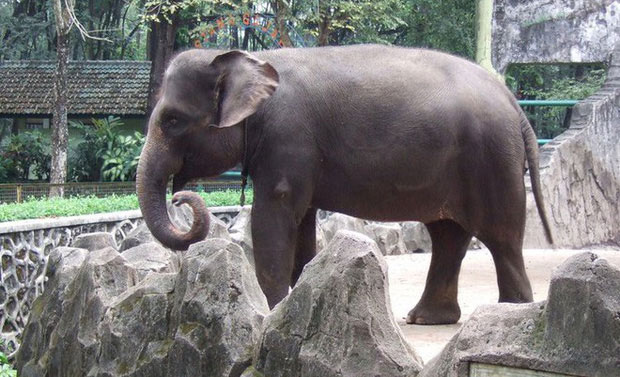
Animals weighing up to 5 tons, in 2012 were listed by WWF World Wide Fund for Nature, due to their habitat being severely damaged. Only about 2,400 to 2,800 are still alive.






